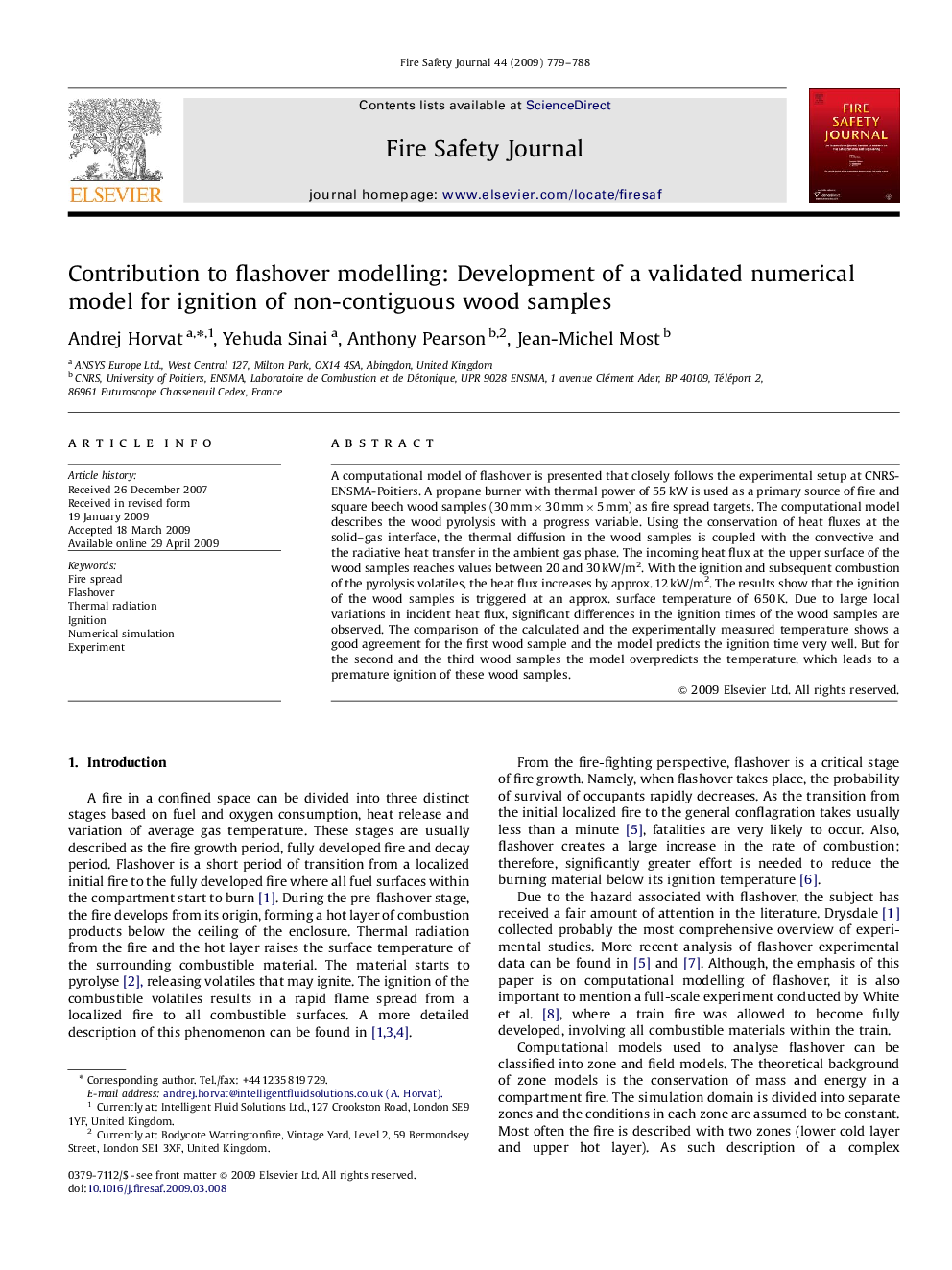| Article ID | Journal | Published Year | Pages | File Type |
|---|---|---|---|---|
| 270370 | Fire Safety Journal | 2009 | 10 Pages |
A computational model of flashover is presented that closely follows the experimental setup at CNRS-ENSMA-Poitiers. A propane burner with thermal power of 55 kW is used as a primary source of fire and square beech wood samples (30 mm×30 mm×5 mm) as fire spread targets. The computational model describes the wood pyrolysis with a progress variable. Using the conservation of heat fluxes at the solid–gas interface, the thermal diffusion in the wood samples is coupled with the convective and the radiative heat transfer in the ambient gas phase. The incoming heat flux at the upper surface of the wood samples reaches values between 20 and 30 kW/m2. With the ignition and subsequent combustion of the pyrolysis volatiles, the heat flux increases by approx. 12 kW/m2. The results show that the ignition of the wood samples is triggered at an approx. surface temperature of 650 K. Due to large local variations in incident heat flux, significant differences in the ignition times of the wood samples are observed. The comparison of the calculated and the experimentally measured temperature shows a good agreement for the first wood sample and the model predicts the ignition time very well. But for the second and the third wood samples the model overpredicts the temperature, which leads to a premature ignition of these wood samples.
